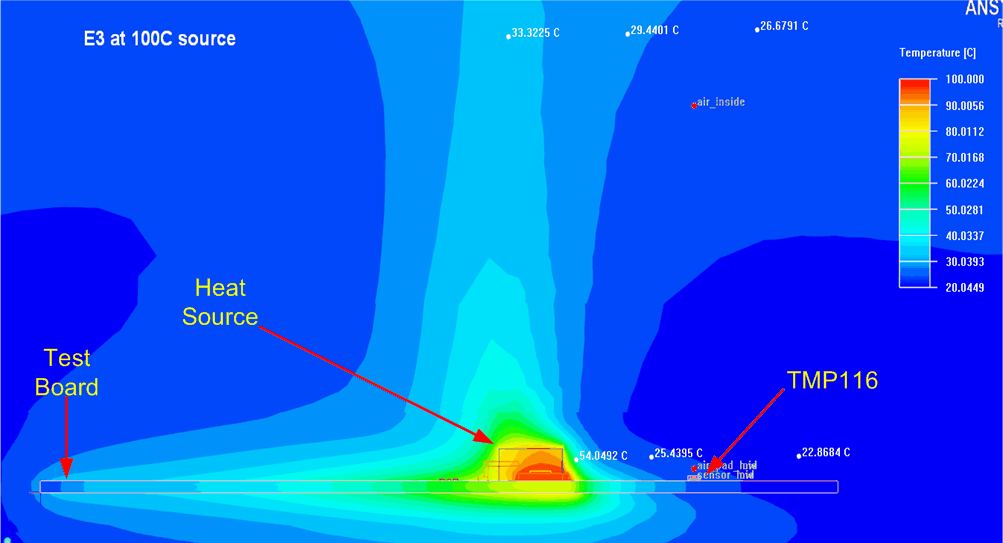SNIA043A july 2021 – april 2023 TMP114 , TMP144
3 Component Temperature Monitoring With Adjacent PCB Placement
The simplest and most common method of monitoring a critical component's temperature is to place a temperature sensor directly next to the component, and allow heat to conduct via the PCB and traces to the temperature sensing IC or thermistor. While this method is extremely cheap and simple, the temperature sensor will be vulnerable to thermal interference from ambient temperature and heat from other components on the PCB. The heat radiated from the critical component can also decay very quickly when the temperature differential between the component and ambient is very high. Figure 3-1 shows this in thermal simulation, using the TMP116 temperature sensor placed on a board near a roughly 100 °C heat source.
 Figure 3-1 Thermal Simulation of TMP116 near 100C Heat Source
Figure 3-1 Thermal Simulation of TMP116 near 100C Heat SourceAs shown, the quality of temperature data will decline rapidly as distance between the sensor and component increases.